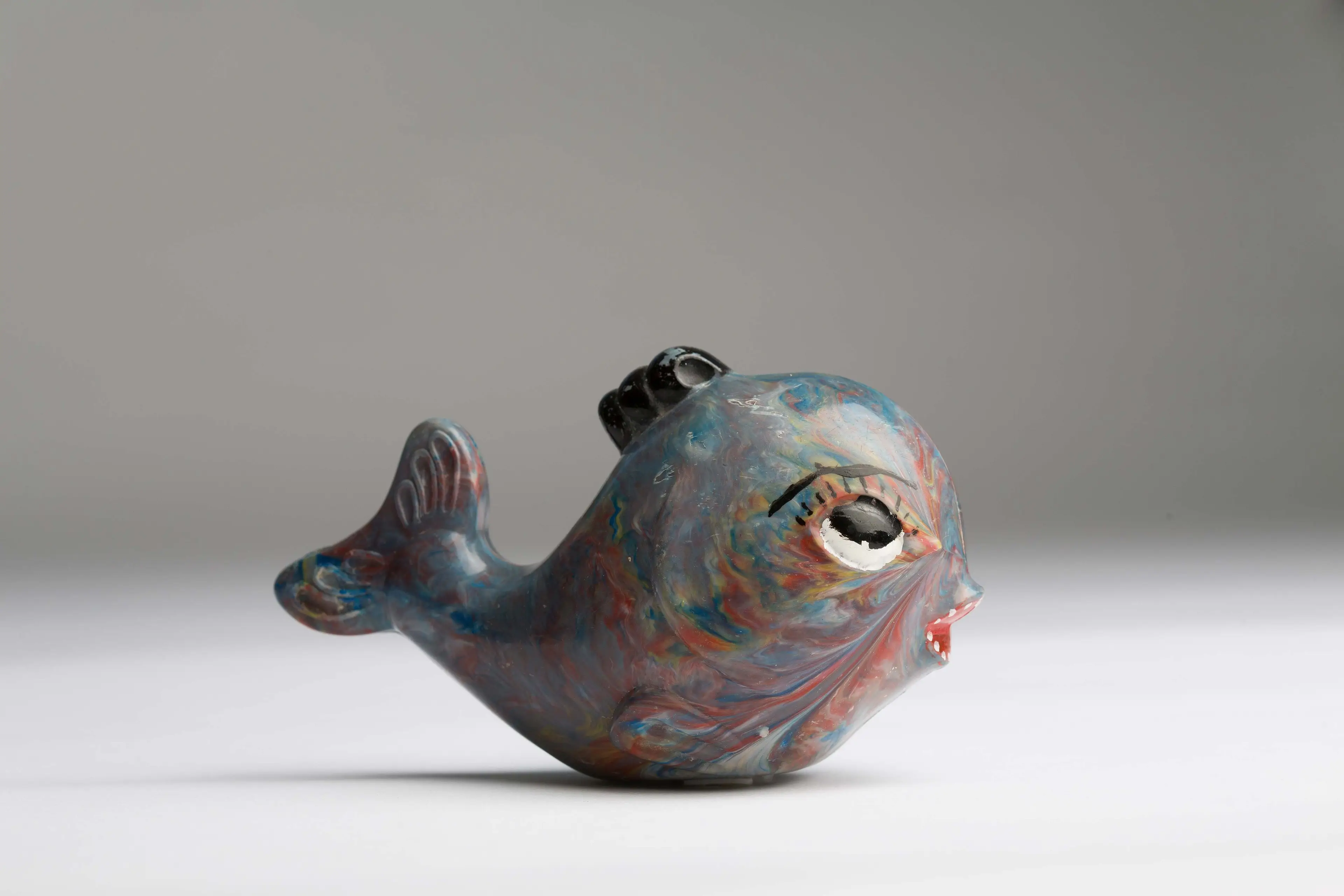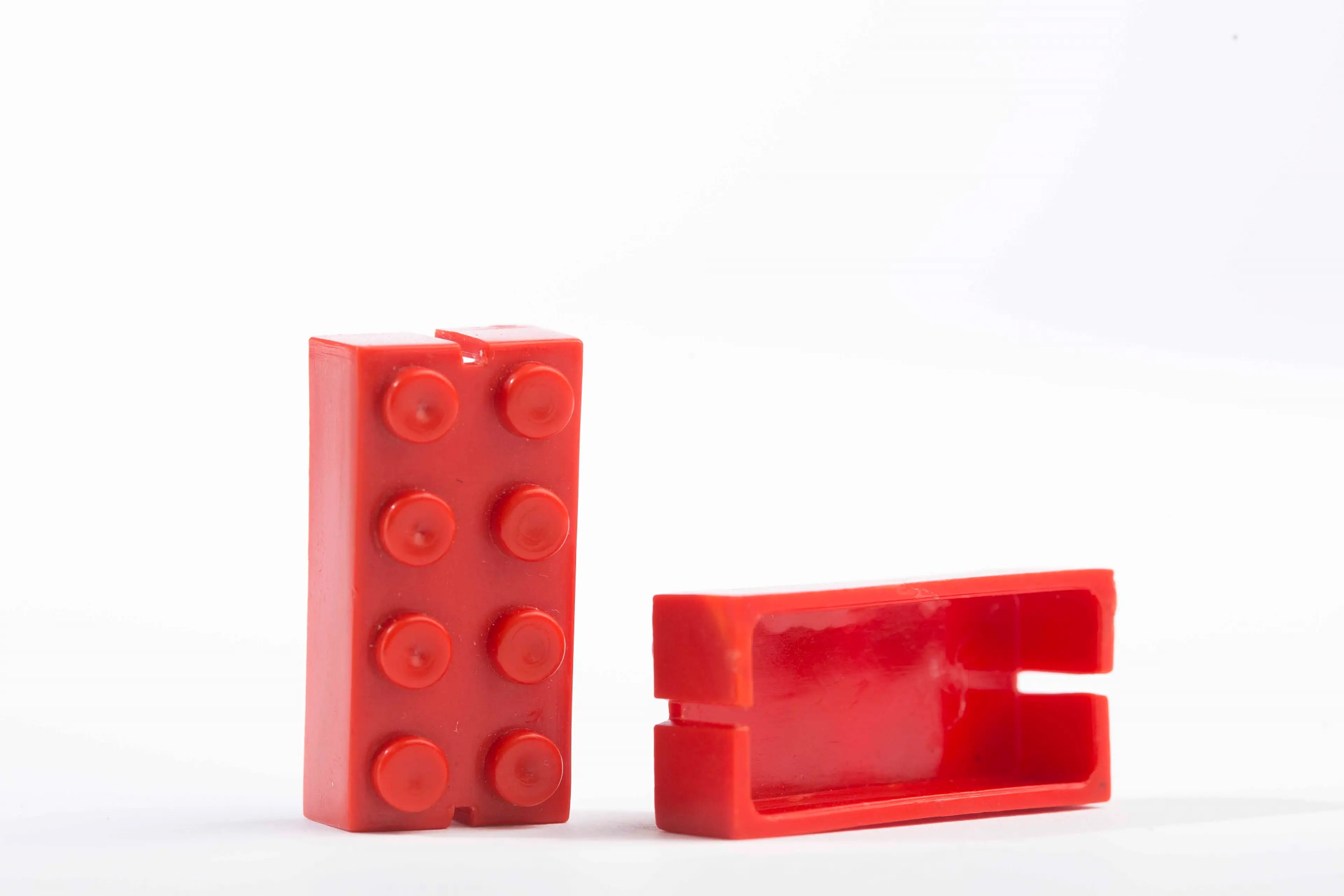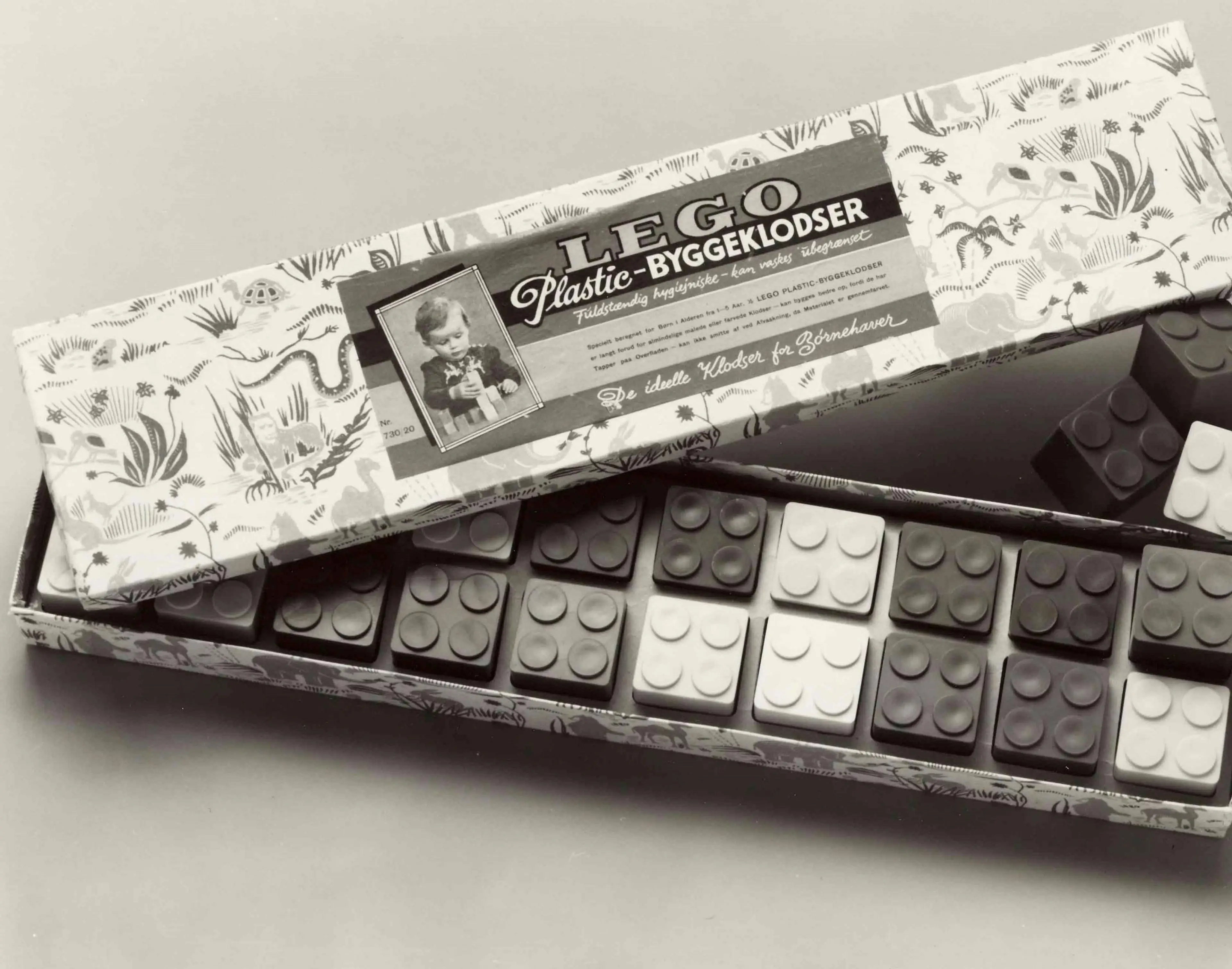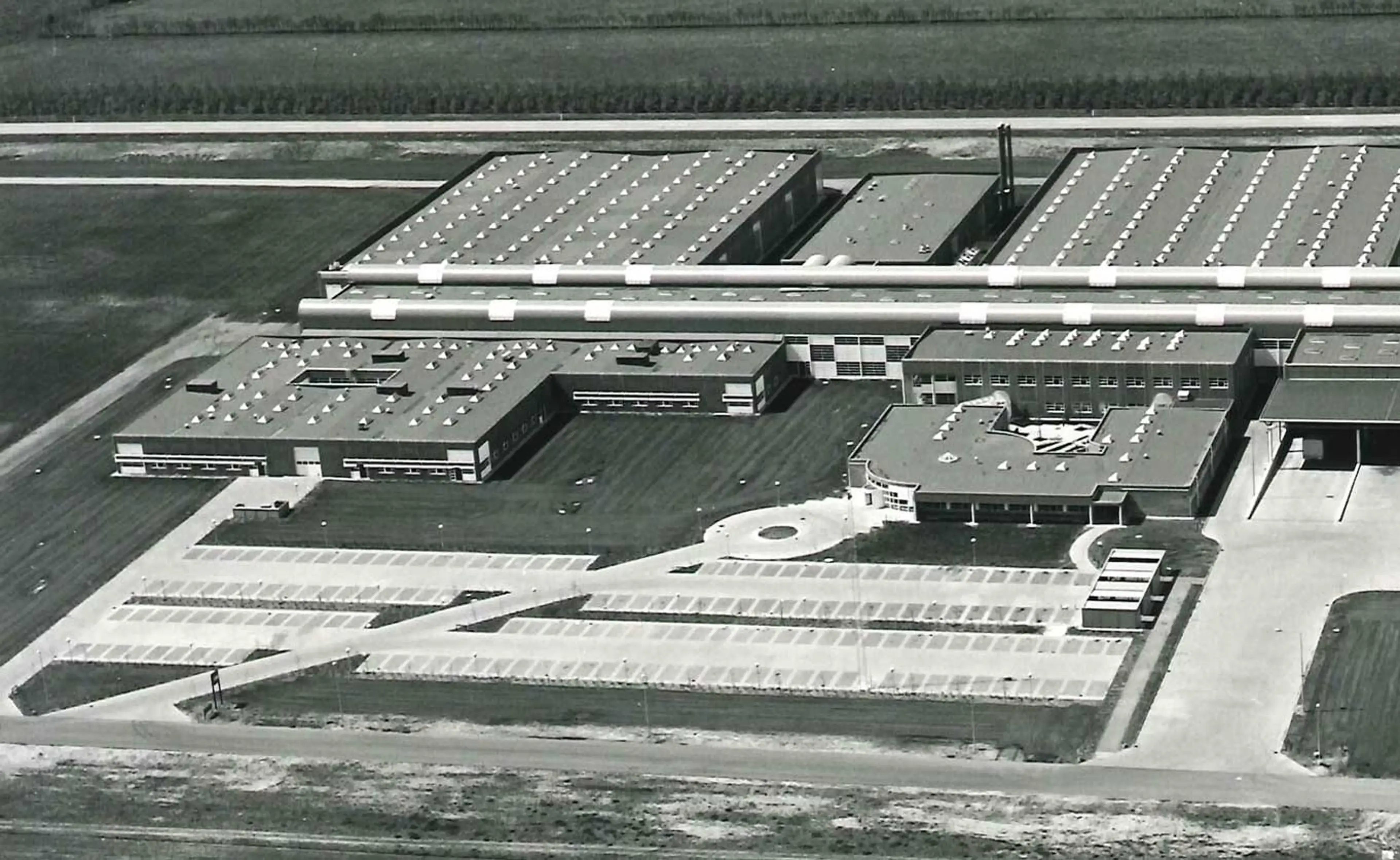In 1949 the LEGO Group’s plastics department manufactures various kinds of toys. Among these the company’s first plastic bricks, which are marketed under the name Automatic Binding Bricks. Giving the toy an English name is a tribute to the Allied forces who liberate Europe and end World War II in 1945. At this point the bricks, as all of the company’s other toys, are sold exclusively in Denmark.
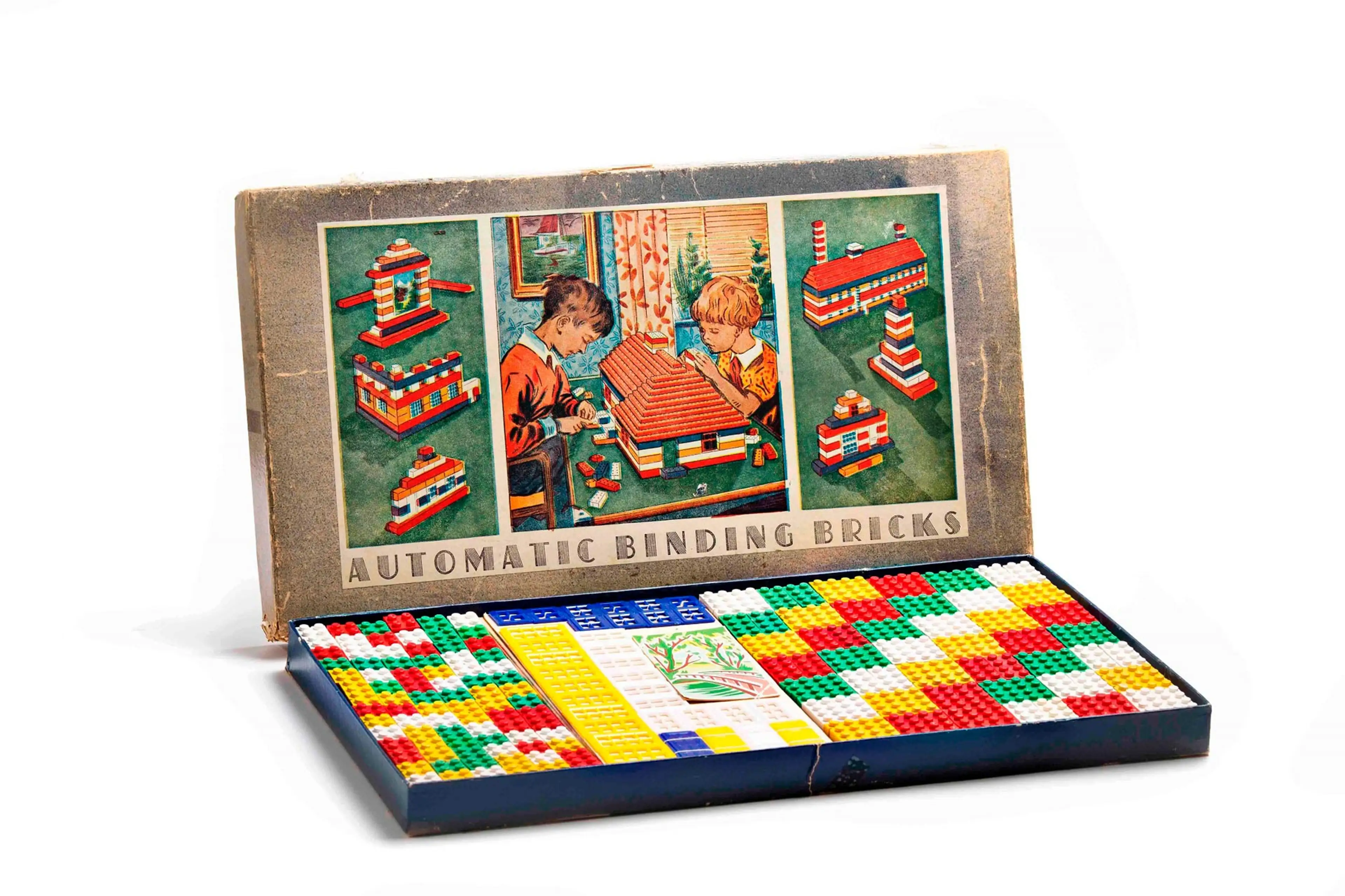
Experimenting with plastics
Employees begin experimenting with plastics immediately after the arrival of the company's first plastic injection-molding machine in late 1947. The machine is installed in a building next to the woodworking factory, after it has been tested in the basement of Godtfred Kirk Christiansen's home. The company gets more acquainted with plastic molding through 1948 and in 1949 the company introduces its first plastic products.
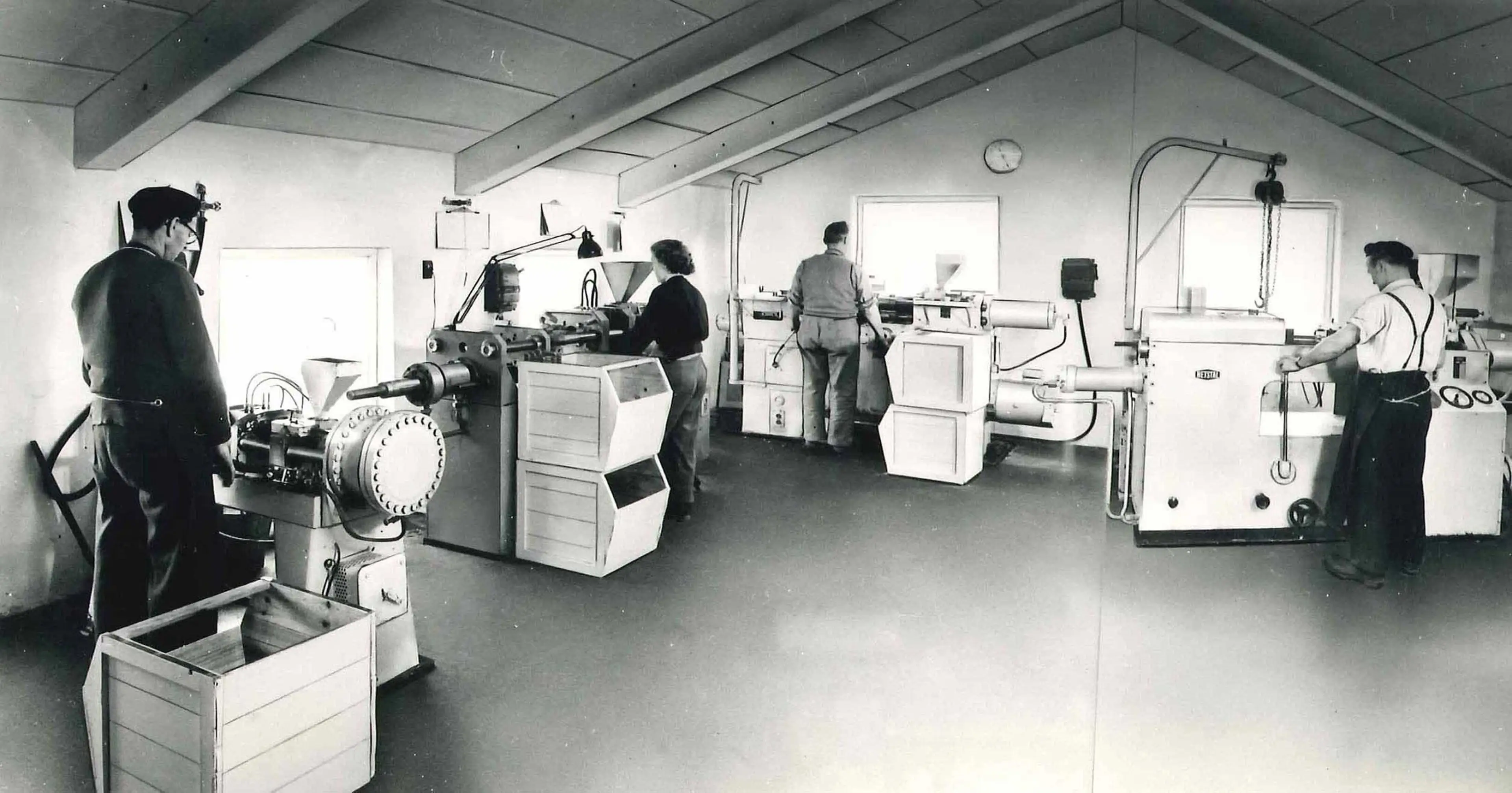
Launch of the first building set
In the late 1940s, Ole Kirk Kristiansen and son Godtfred Kirk are presented with plastic cubes from a British manufacturer. They begin redesigning the cubes and in 1949; the company launches its first building set: Automatic Binding Bricks.
Although the bricks are relatively successful, they are not the best selling plastic toy to come from the LEGO Group. That distinction goes to the Ferguson Tractor, introduced in the fall of 1951.
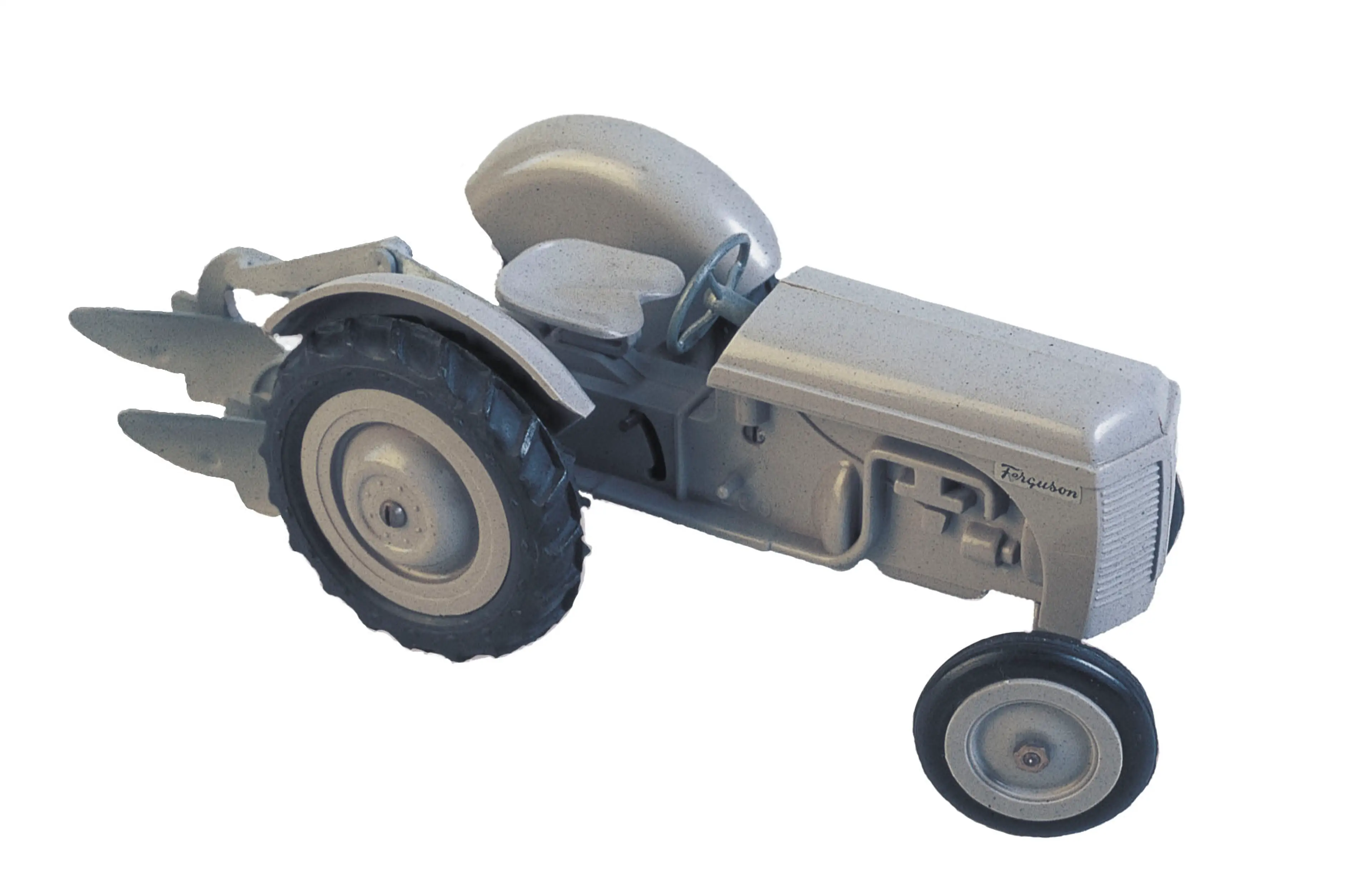
A Briton, Hilary Fisher Page, and his company Kiddicraft has invented the plastic bricks that Ole Kirk and his son Godtfred are presented with. In the late 1950s, the LEGO Group contacts Kiddicraft to ask whether they object to the LEGO brick. They do not. On the contrary, they wish the company good luck with the bricks, as they have not enjoyed much success with their product. In 1981, the LEGO Group purchases the rights to the Kiddicraft bricks and trademark from the descendants of Hilary Fisher Page.
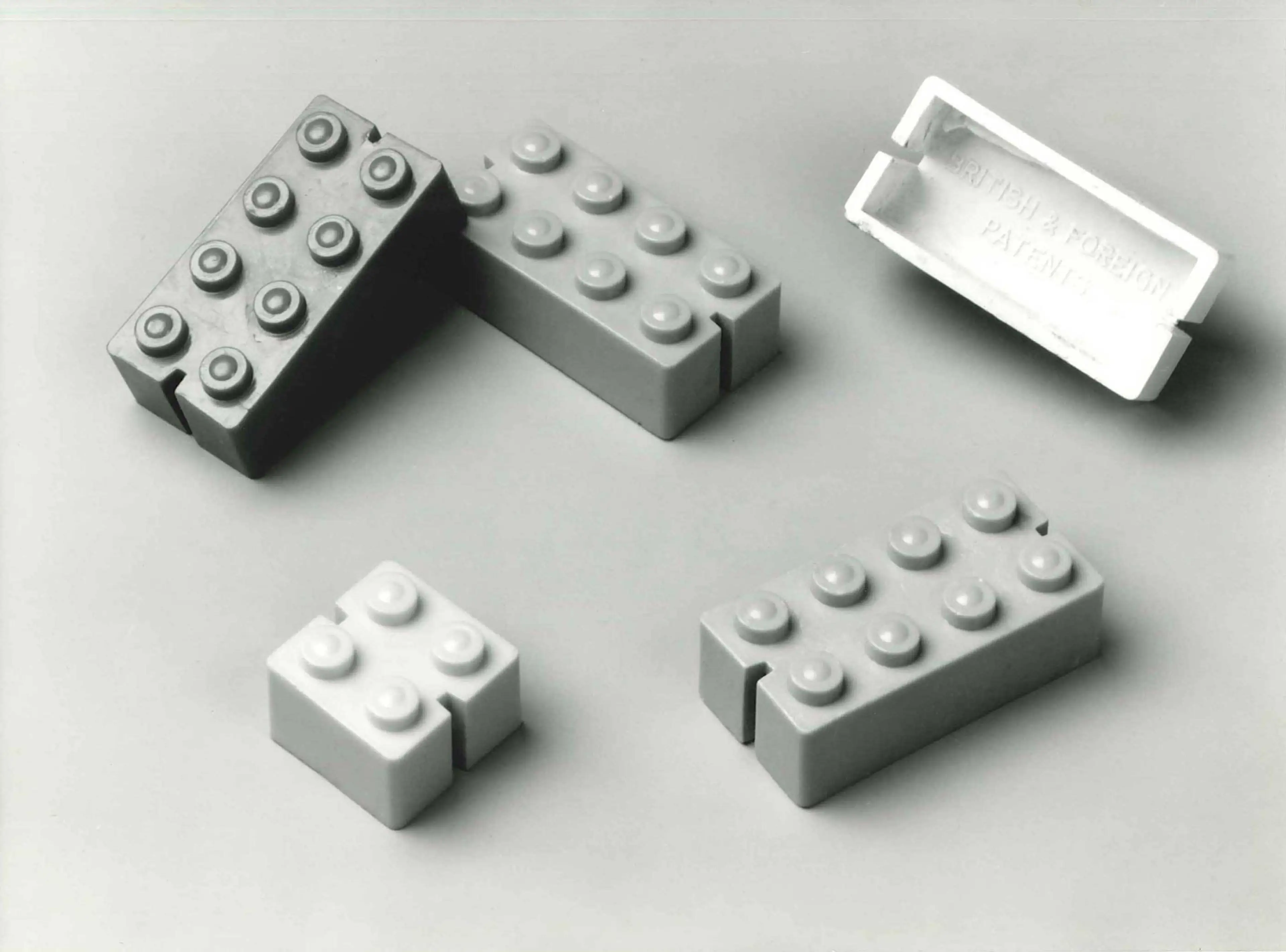
© Mogens Skou Reklamefotografi

